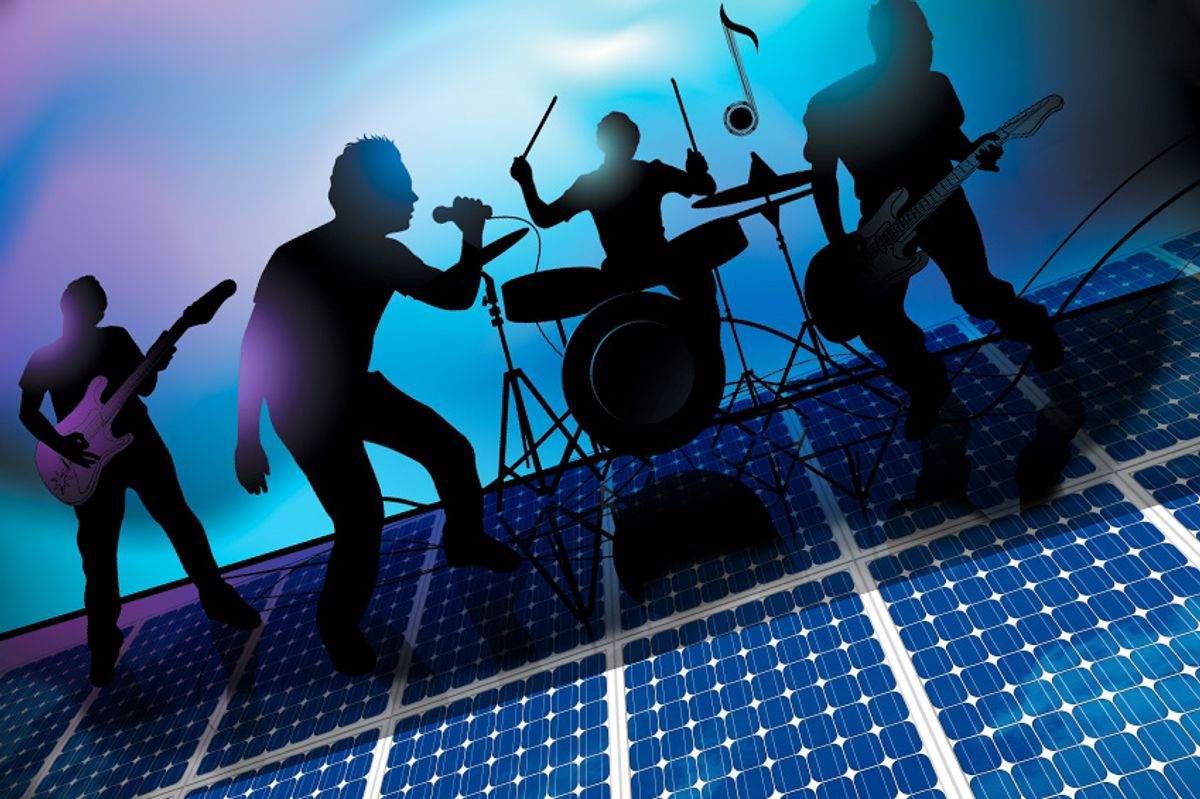If you feel the energized by the sounds of your favorite band, you are not alone.
Solar cells, it turns out, could have the same reaction. Music vibrations boost the energy output of solar cells that contain nanorods. So says a new study from Queen Mary University of London and Imperial College London.
The high frequency of pop and rock music cause vibrations that increased the energy generation of solar cells with clusters of nanorods. Scientists had already known that straining zinc oxide materials could increase voltage outputs, but the effect had not been tested extensively on solar cell efficiency. Other scientists are looking to use other nano materials such as nanowires to boost the efficiency of solar cells.
The British researchers grew billions of zinc oxide nanorods and coated them with an active polymer that could convert sunlight into electricity. They discovered that when the solar cells were exposed to sound, the photovoltaic efficiency increased by as much as 45 percent.
"We thought the sound waves, which produce random fluctuations, would cancel each other out and so didn't expect to see any significant overall effect on the power output," study co-leader James Durrant, professor of photochemistry at Imperial College London, said in a statement.
"The key for us was that not only that the random fluctuations from the sound didn't cancel each other out, but also that some frequencies of sound seemed really to amplify the solar cell output - so that the increase in power was a remarkably big effect considering how little sound energy we put in."
The researchers noted significant improvement in solar cell performance with levels as low as 75 decibels, a sound level similar to busy street traffic. They didn’t go as far as to compare the benefits of one band versus another, but did find that not all musical genres offered the same benefits.
"We tried playing music instead of dull flat sounds, as this helped us explore the effect of different pitches. The biggest difference we found was when we played pop music rather than classical, which we now realize is because our acoustic solar cells respond best to the higher pitched sounds present in pop music," said Durrant.
Rather than streaming music to solar panels, the research would more likely be used to develop power sources for products that are already exposed to high-frequency acoustic vibrations, such as cars or air conditioners.
Image: iStockphoto



